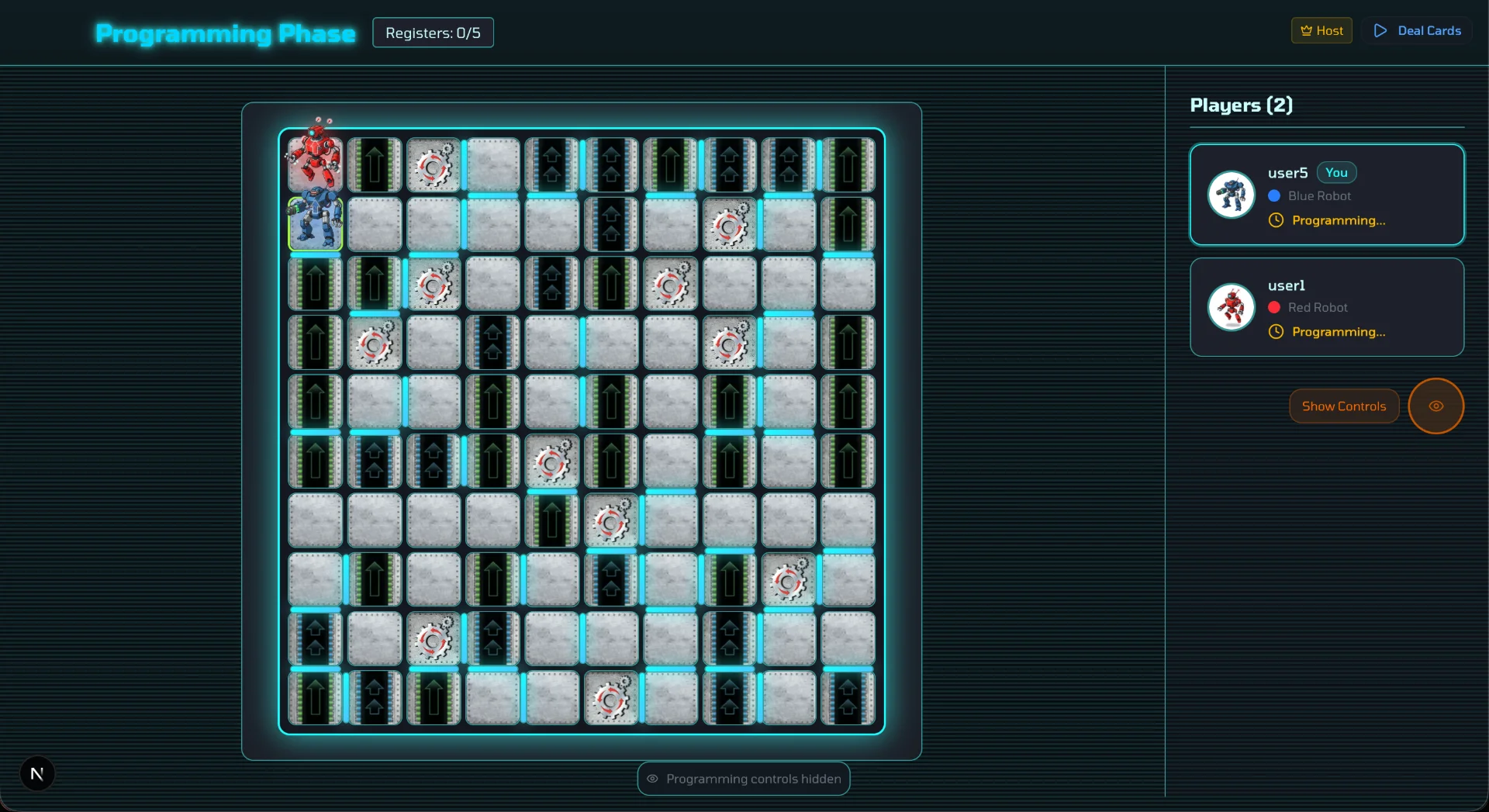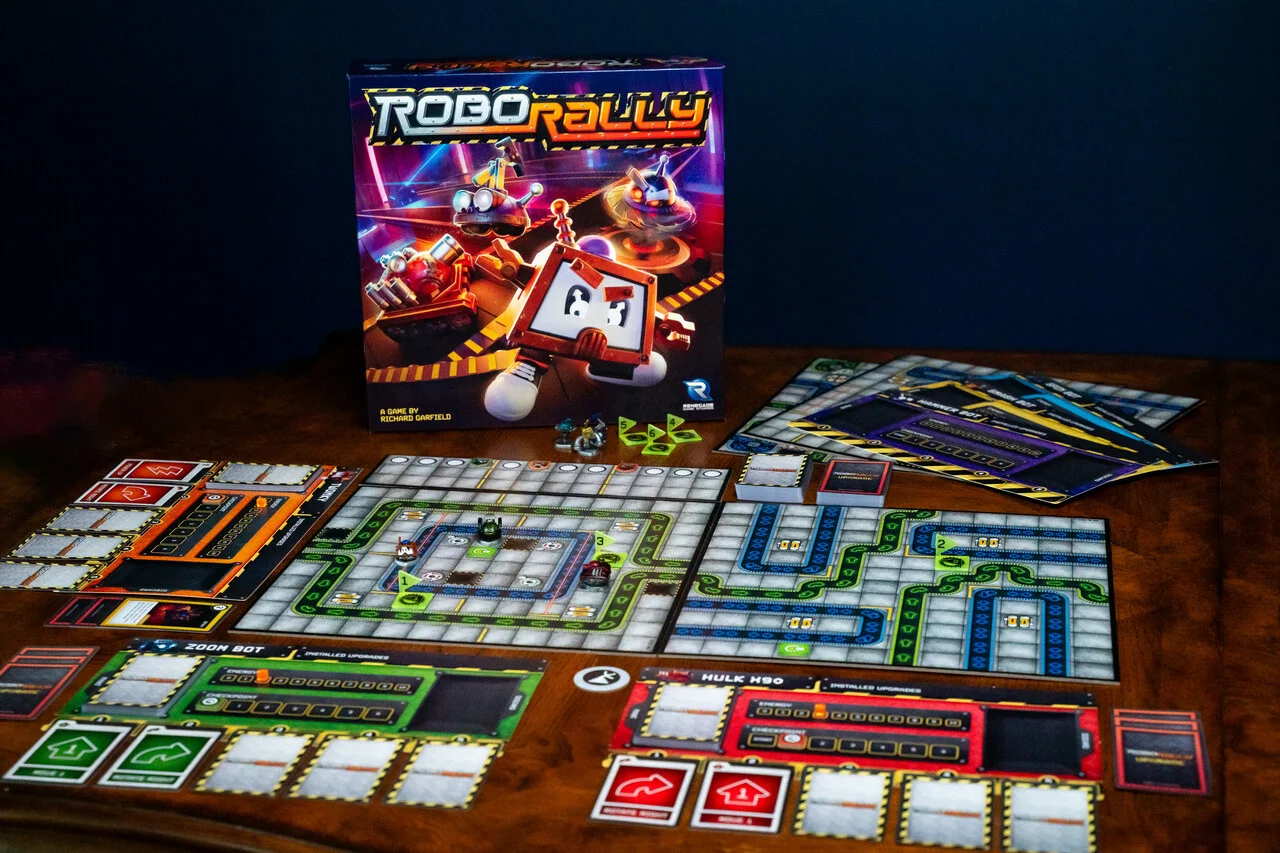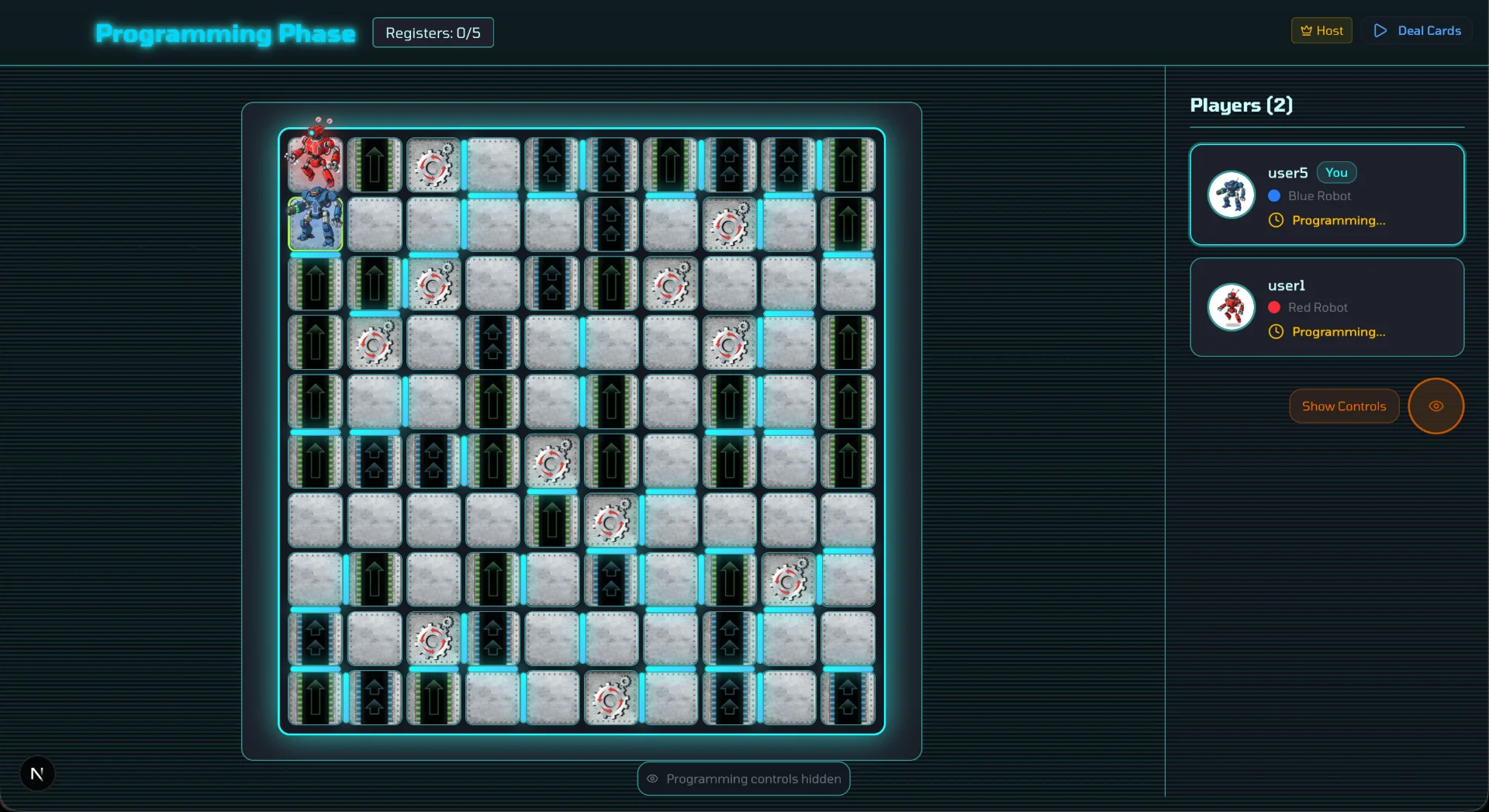Digitalizing RoboRally: Transforming a Classic Board Game into an Online Multiplayer Experience
abc

Introduction
As part of my exchange program at the Technical University of Denmark (DTU) during the first semester of my fifth year, I'm currently immersed in a group project for the Software Engineering II course. Our team of 10 students is tasked with digitalizing "RoboRally," a beloved physical board game originally designed by Richard Garfield. What began as a chaotic, fun tabletop experience involving programmable robots navigating hazardous factory floors is being reimagined as a web-based online multiplayer game.
This project builds on the game's core appeal—strategic programming, unpredictable interactions, and hilarious mishaps—while addressing the limitations of its physical form. Using Agile methodologies with Jira for task management, we're creating a platform that allows players to compete remotely, with features like real-time updates, persistence, and community elements. It's an exciting blend of game design, networking, and software engineering, and as of October 2025, we're making steady progress toward our first demo and full release by the end of December.

Figure 1: The physical RoboRally setup, featuring the board, robots, and program cards.
Purpose of the Project
RoboRally is a strategy board game where players control quirky robots in a high-tech factory. The objective is to program your robot using movement cards (like Move 1, Turn Left, or U-Turn) to reach checkpoints while avoiding obstacles such as conveyor belts, gears, lasers, pits, and other robots. The game unfolds in phases: the Programming Phase, where players secretly plan five moves, and the Activation Phase, where actions are executed in priority order, often leading to chaotic collisions and off-board falls.
While the physical version is engaging, it has drawbacks: it requires significant table space, setup time, and physical presence, limiting multiplayer options to local groups. Expansion content can be costly, and tracking complex rules manually can be error-prone. Our digital version aims to solve these by:
- Enabling online multiplayer for global play.
- Automating game phases for smoother, error-free execution.
- Adding social features like lobbies, leaderboards, and replays.
- Supporting persistence to save games and allow reconnections.
Ultimately, we want to make RoboRally accessible anytime, anywhere, fostering a vibrant online community while preserving its strategic depth and fun.
Architecture Overview
To handle the real-time nature of multiplayer gameplay, we're adopting an event-driven architecture. This allows for efficient handling of player actions, board updates, and interactions without constant polling. We're also following Clean Architecture principles to keep the core game logic independent from UI and infrastructure, ensuring maintainability and testability.
The system is divided into:
- Frontend: Handles user interactions, rendering the board, and displaying animations for robot movements.
- Backend: Manages game state, rules enforcement, and real-time communication.
- Database: Stores user data, game sessions, and persistent elements like leaderboards.
This setup supports seamless multiplayer lobbies and automatic phase transitions, with examples including event handlers for card plays and obstacle interactions.
Technologies Used
We've chosen a modern stack to balance performance, scalability, and developer experience.
Frontend
- Framework: Next.js with TypeScript for server-side rendering and fast loading.
- Styling: Tailwind CSS for responsive, utility-first designs.
- Real-time Features: Integrated with SignalR client for live updates.
- Other: Custom components for board rendering, card dragging, and animations.
Backend
- Framework: .NET Core for robust API and logic handling.
- Real-time Communication: SignalR for WebSocket-based multiplayer synchronization.
- Database: PostgreSQL for relational data, managing users, games, and stats.
Deployment
- Planned: Containerization with Docker, deployment on cloud platforms like Azure or AWS.
- CI/CD: GitHub Actions for automated builds and tests.
- Testing: Unit tests with xUnit/NUnit, integration tests for game rules.

Figure: Implemented UI for programming phase
My Role and Responsibilities
In our 10-person team, roles are divided across frontend, backend, and DevOps, with cross-functional collaboration. I'm primarily focused on frontend development and integration, ensuring the UI captures the excitement of the physical game.
As Developer
- Implemented authentication flows using JWT for secure logins and session management.
- Built the game lobby system with Next.js, allowing players to create/join rooms and select robots.
- Integrated SignalR for real-time events, like updating the board during Activation Phase.
- Worked on basic rules: Programming Phase card selection and Activation Phase simulations with elements like conveyors and gears.
- Contributed to persistence features, saving game states to PostgreSQL for reconnections.
As Team Collaborator
- Participated in Agile sprints via Jira, including backlog grooming, daily stand-ups, and retrospectives.
- Collaborated on design decisions, such as UI feedback for robot movements and obstacle interactions.
- Helped plan future features: Upgrade Phase for robot enhancements, additional elements like lasers and pits, and social tools like replays and leaderboards.
Challenges and Lessons Learned
Digitalizing a board game like RoboRally isn't without hurdles. Ensuring real-time synchronization across players without lag required fine-tuning SignalR hubs and optimizing event payloads. Simulating complex interactions (e.g., priority-based activations and chain reactions from conveyors) demanded careful rule implementation to avoid bugs.
Coordinating a large team highlighted the importance of clear communication and modular code. We've learned to prioritize MVPs—focusing on core phases for the first demo—while planning for scalability. These experiences have deepened my understanding of event-driven systems, Agile in practice, and building engaging user experiences.
Conclusion
The RoboRally digitalization project is a thrilling journey from physical boards to a dynamic online platform, set to revolutionize how fans play this classic. By December, we aim to deliver a complete game with advanced features, making it fun, accessible, and social for players worldwide.
This hands-on work at DTU has reinforced my skills in full-stack development and team-based engineering. Stay tuned for updates—if you're a board game enthusiast or developer, I'd love to hear your thoughts!